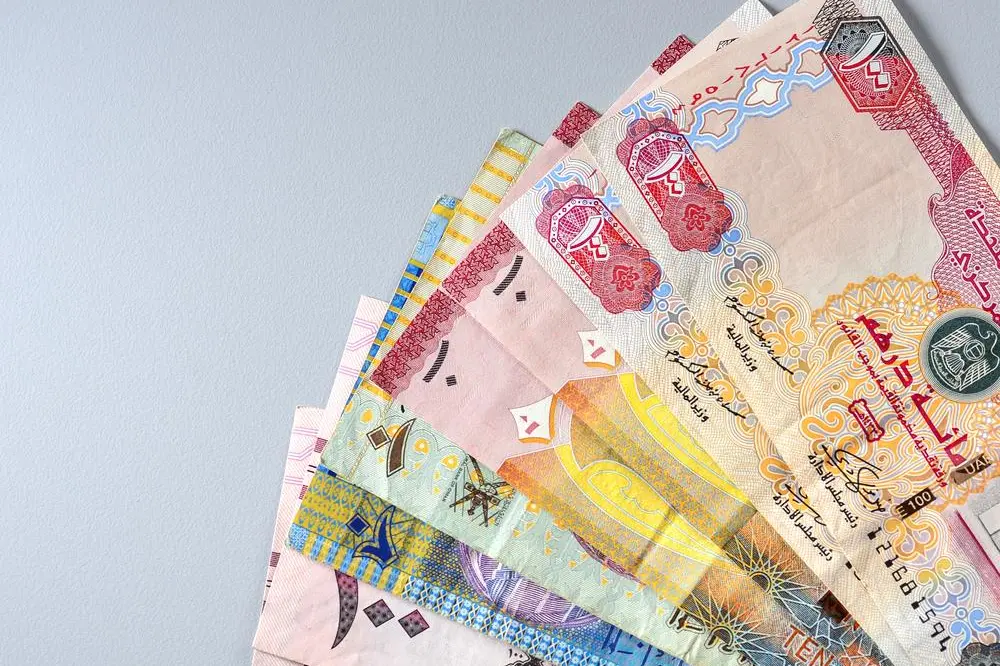PHOTO
GCC banking sector net profits showed a q-o-q increase almost equivalent to the decline in loan loss provision (LLP) during Q3-2021, according to asset management company Kamco Invest.
Total banking sector net profits reached $9.4 billion in Q3-2021 as compared to $8.3 billion during Q2-2021.
Profits continued to remain below pre-Covid levels of $10.2 billion reported in Q3-2019. Nevertheless, q-o-q growth was seen across the GCC, barring in Oman, with Saudi Arabia, Kuwait and Bahraini banks seeing double digit growth.
Profits reported by Saudi Arabian banks reached one of the highest quarterly levels of $3.5 billion as compared to $2.9 billion in Q2-2021 and $3.2 billion in Q3-2020.
UAE and Qatari banks showed high single digit bottom-line growth of 7.7% and 7.3%, respectively.
Out of the 60 banks that reported earnings during the quarter 19 banks reported a q-o-q drop in net profits during Q3-2021 while in terms of y-o-y growth, nine banks reported a decline.
Banks that reported noticeable decline in net profits included Bank of Sharjah that continued to reported losses for the fourth consecutive quarter at $226.9 million, a bigger loss as compared to a loss of $93.9 million reported during Q2-2021.
Saudi British Bank also reported a decline in profits during the quarter mainly led by higher operating expenses.
Loan loss provisions reported by GCC banks reached the lowest in 8-quarter during Q3-2021.
Aggregate LLP stood at $3.2 billion during the quarter against $4.1 billion during Q2-2021 and $4.4 billion in Q3-2020. The q-o-q decline in LLP was seen across the GCC, barring UAE, with Oman and Saudi-listed banks reporting the steepest drop at 45.4% and 44.2%, respectively.
Absolute decline was the highest in Saudi Arabia at $0.5 billion with total LLP at $0.7 billion at the end of the quarter, almost in line with LLP for Qatari banks. UAE-listed banks, on the other hand, showed the biggest LLP of $1.3 billion after reporting a marginal q-o-q growth of 0.1% during Q3-2021.
Lending activity remained robust during Q3-2021 resulting in record high loan books, although q-o-q growth was much smaller as compared to the previous quarter. Aggregate gross loans at the end of the quarter reached $1.71 trillion, up 1.7% q-o-q and 6.8% y-o-y, once again led by a broad-based growth seen in all the markets.
Net loans showed a slightly slower growth of 1.6% q-o-q to reach $1.62 trillion, backed by growth in all the markets, barring Omani banks. Bank lending in the region was supported by continued robust economic growth as vaccinations picked up and restrictions were lowered.
Customer deposits also showed growth in all the markets during the quarter.
Aggregate customer deposits increased by 2.0% to reach $2.03 trillion, a new record high for the GCC banking sector, as compared to $2.0 Trillion at the end of Q2-2021.
Saudi Arabian banks reported the biggest absolute sequential growth in customer deposits followed by UAE and Qatari banks while growth in the case of Omani banks remained muted.
A higher growth in customer deposits during the quarter vs. loan growth resulted in a slight decline in loan-to-deposit ratio for the GCC banking sector. The aggregate loan-to-deposit ratio dropped 30 bps q-o-q to 80.1%, still below pre-Covid-19 levels.
Near term outlook for the sector remains positive barring selected countries. Saudi Arabia continues to push developmental activity with an increasing number of projects under execution along with several PPP projects. In a recent report, S&P expressed its optimism in Saudi Arabia’s banking sector as a result of growth in mortgage loans and the implementation of Vision 2030 projects.
That said, uncertainties related to new variants of Covid-19 and the resulting restrictions may dent the overall growth story in the region. This, coupled with an expected increase in interest rates, may affect overall lending growth in the near-term.-- TradeArabia News Service
Copyright 2021 Al Hilal Publishing and Marketing Group Provided by SyndiGate Media Inc. (Syndigate.info).
Disclaimer: The content of this article is syndicated or provided to this website from an external third party provider. We are not responsible for, and do not control, such external websites, entities, applications or media publishers. The body of the text is provided on an “as is” and “as available” basis and has not been edited in any way. Neither we nor our affiliates guarantee the accuracy of or endorse the views or opinions expressed in this article. Read our full disclaimer policy here.












